By Lauriane Lognay
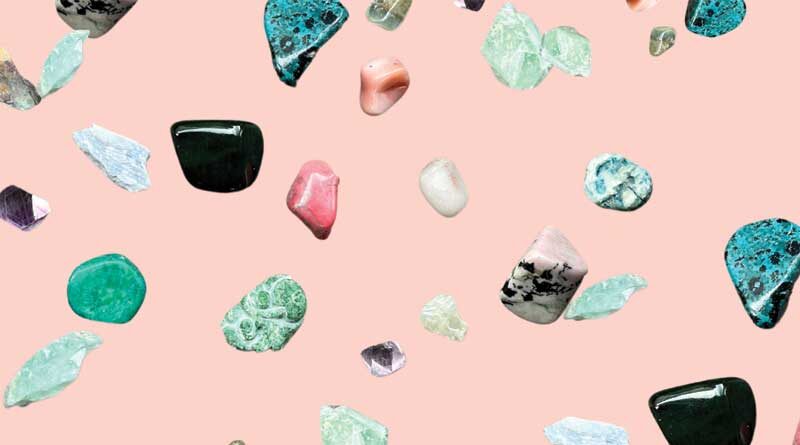
Have you ever wondered what you could do with your small broken gemstones? The gems you don’t sell because of their weird shape? The ones that are scratched up, full of abrasions?
What if we could make the smallest difference in our consumption in the jewellery business? If the smallest speck of metal can be refined and melted to be used again, why not gemstones? This is where upcycling comes in.
What is upcycling and how does it differ from recycling?
Simply put, upcycling and recycling diverge in their methods of waste management. Recycling involves breaking materials down to their basic elements for reuse, sometimes resulting in a decrease in quality. Take plastic as an example, it is constantly reused, transformed, and modified to multiple purposes during its life, often losing its quality with time.
On the other hand, upcycling ingeniously transforms items into new creations without diminishing their quality, sometimes adding value or even improving functionality. While recycling prioritizes large-scale processing and material reclamation, upcycling celebrates a more “personal’’ creativity and favours minimal processing, resulting in distinctive and enhanced products. Recycling changes the intended product and its use while upcycling just reuses or repurposes it. Some of us have been upcycling for years without knowing it!
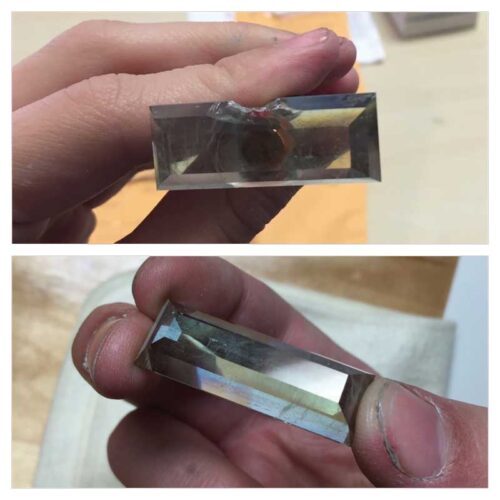
How does this affect your business?
As a gemstone wholesaler and gemmologist, I come across a lot of gemstones. Often, the gemstones I encounter are broken. Sometimes stones break when there are multiple in the same bag, or when dropped onto the floor. Sometimes I acquire broken stones when buying accumulated stock from a closed shop, etc.
Jewellers also come across their fair share of broken stones: When replacing the broken or missing gems from client jewellery, or when finding stones with abrasions—when you accumulate stock over 10, 20 or even 30 years, some are bound to have abrasions.
Yet, what are you supposed to do with these broken stones? Put them in your fish tank, give them to kids to play, recut them only if they are valuable enough or big enough, or throw them in one big miscellaneous bag—because who has time for them?
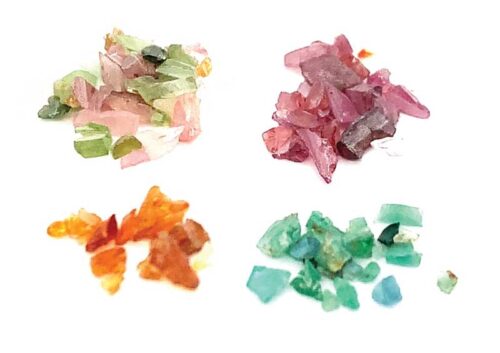
reused. Tourmaline, emerald, rhodolite garnet, and citrine. Photos courtesy Rippana, Inc./Lauriane Lognay
Upcycling precious and fine gemstones would enable you to have more sellable stock. It would get you to work on your creativity. It would give more jobs to people who need it. Further, with the current market price for rough and cut gems: It would help you save money.
Better yet: Upcycling makes for a fantastic sales tactic. You can give clients new options, new ideas, and a hope for less waste in our world! Consider:
- “Would you be interested in our upcycled jewellery line?’’ It arouses curiosity!
- “Did you know we find it important to repurpose your old gemstones? We can transform them for you!’’ Offer to recut the old heirloom gemstones that clients do not like.
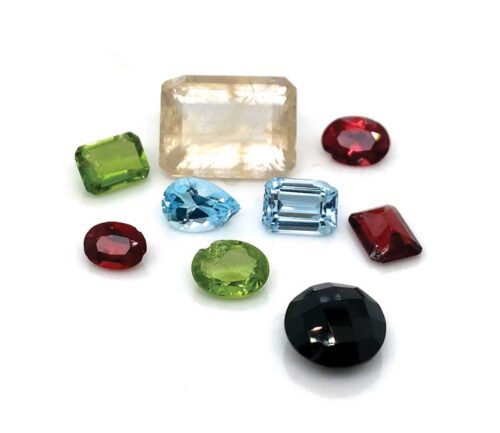
How can you upcycle your gemstones?
There are a lot of different ways for you to upcycle gemstones and make a difference.
1) Recutting
You can have the gems recut. The bigger ones can be recut locally, giving you brand-new gemstones to sell and opening space for more jobs to local lapidary artists—helping each other in the trade is paramount for the survival of the jewellery business. If weight is important, fantasy facets or even a modified cut work well.
Smaller gems, or even the melees (around 3 mm and smaller) could be recut overseas. A lot of cutting factories, notably in Thailand, India, and Sri Lanka, specialize in smaller gemstone recutting. The downside would be the wait time, depending on the quantity you send, but it is a huge advantage to be able to get brand new melee to use in jewellery at a low enough cost to still be able to make a buck on them.
If trust is an issue, most world-renowned organisations have members from around the globe. For instance, the International Coloured Gemstone Association’s (ICA’s) member directory features cutting factories, individuals who are specialized in recutting, and lapidary artists.
2) Utilizing shards
When I deal with cutting factories, I always ask them to send me the leftovers. A specific kind of clientele likes rough gemstones in jewellery. A leftover shard of rough spinel or citrine could be a great option for a more creative and unique jewellery piece. It is also a great practice option for jewellery students, apprentices, and the like. Difficult settings can be practiced with rough, and art clay jewellery or even casting can be practiced with stones instead of diamonds. Gemstone shards can be used in multiple situations and even put in a sealed little glass bottle to be given to children that come in the store or sold to rough collectors. Nothing is wasted.
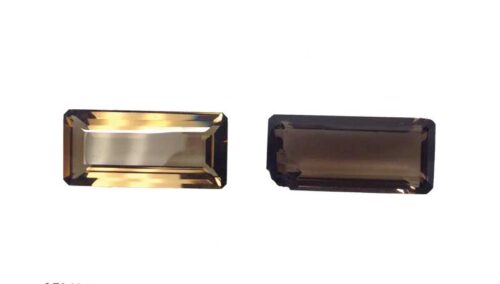
3) Transforming dust
Depending on your clientele, you can also transform your gems: Old stock broken lapis lazuli? Malachite sculpture that you can not glue together again? Some opaque gems are not worth the effort and the time it takes to recut or repair. These gems are instead perfect for powder/dust making!
Let’s say you have a client come in with a broken lapis lazuli cabochon that used to belong to her mother. She does not like the cabochon, it’s broken, but she doesn’t want to throw it away either. Why not grind it into a fine blue dust, mix it with resin, and put it in a ring she will love? Nothing is lost, everything can be reused.
Keep in mind not all gems will give a beautiful colour when grinded to dust, and not all of them will be soft enough to grind in your shop. Yet, this is a fantastic option for gems that are normally not expensive enough to bother with! Gems like malachite, lapis-lazuli, jasper, nacre, etc. were already used in ancient times as pigments for paints and clothes, why not this? Just be careful to always use a mask when making powder!
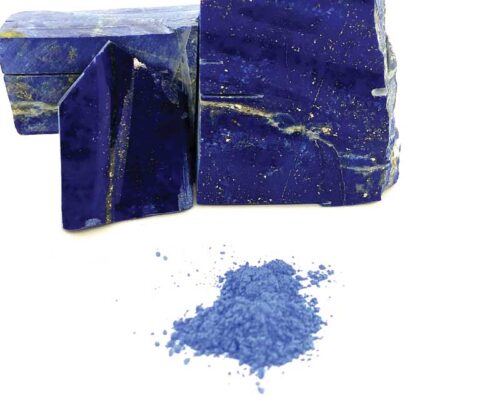
So, why should you upcycle gemstones?
Upcycling gems offers several compelling advantages:
- Expended inventory and creativity. Upcycling enables you to breathe new life into broken or unused gemstones, turning them into sellable stock. This process encourages creative exploration and opens new avenues for jewellery design.
- Economic opportunities. By embracing upcycling, you contribute to the success of other businesses and create employment opportunities—particularly for local lapidary artists—helping you save money in the long run!
- Appealing sales pitch. Positioning upcycled jewellery as a unique selling point can attract customers and spark curiosity. Offering to transform old gemstones into new pieces adds value to your services and demonstrates a commitment to sustainability.
- Environmental responsibility. Upcycling gemstones reduces waste and minimizes the environmental impact of the jewellery industry. By repurposing materials that would otherwise be thrown away, you commit to a more sustainable and eco-friendly approach to business.
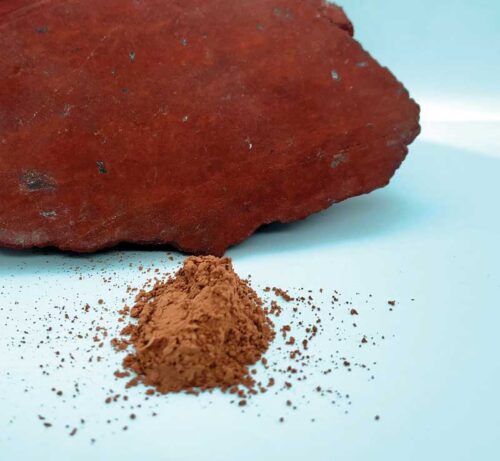
Upcycling precious and fine gemstones is not just a trend! It is a practice we can incorporate into our way of working and being, to make the jewellery world an environment we can be proud of. So, the next time you encounter a broken or worn-out gemstone, consider the possibilities that upcycling holds. After all, in the world of gemstones, nothing truly goes to waste when creativity is at play.
Lauriane Lognay is a fellow of the Gemmological Association of Great Britain (FGA) and has won several awards. She is a gemstone dealer working with jewellers to help them decide on the best stones for their designs. Lognay is the owner of Rippana, Inc., a Montréal-based company working in coloured gemstone, lapidary, and jewellery services. She can be reached at rippanainfo@gmail.com.





